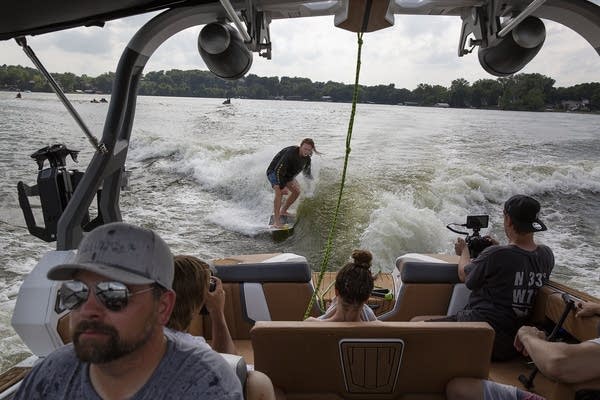University of Minnesota lab to study size, force of boat wakes

Noah Flegel surfs behind a wakeboat in July 2019 on Lake Minnetonka in Mound, Minn. This fall, University of Minnesota researchers plan to launch a study of wakes created by recreational boats, hoping to provide insight into their impact on Minnesota lakes and shorelines.
Christine T. Nguyen | MPR News 2019
Go Deeper.
Create an account or log in to save stories.
Like this?
Thanks for liking this story! We have added it to a list of your favorite stories.


